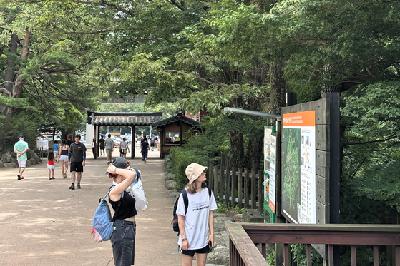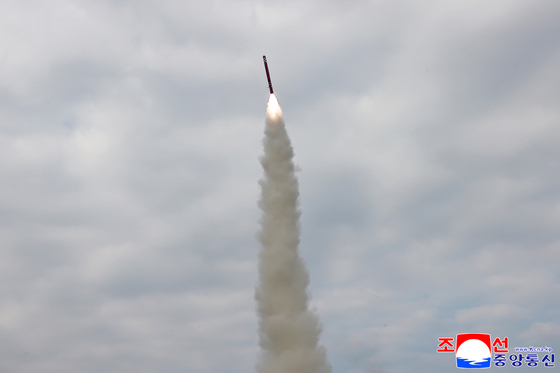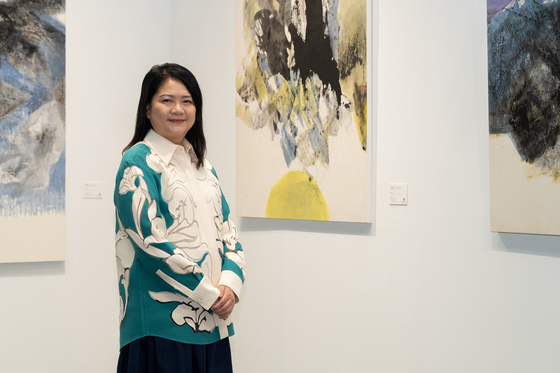Free entry, well-maintained trails turn foreign visitors on to 'K-hiking'
Update: 2025-10-29
Description
This article is by Chon Kwon-pil and read by an artificial voice.
James Miller, 55, who lives in Chicago, recently visited Korea with his family. After sightseeing in Seoul, they headed to Sokcho, Gangwon, to hike in Seoraksan National Park.
"I was looking for somewhere to go outside of Seoul and heard that Seoraksan was beautiful and not too difficult to climb," Miller said. "We had a great day hiking and enjoying delicious Korean food afterward."
As the popularity of "K-hiking" continues to rise, the number of foreign visitors to Korea's national parks has surged. According to the Korea National Park Service, 885,282 foreigners visited national parks across the country last year - more than five times the 165,767 recorded in 2022. This year, 582,077 foreign visitors were tallied through September.
"The actual number is likely higher if we include visitors who were not officially counted," said an official from the Korea National Park Service.
So far this year, Gyeongju National Park has attracted the most foreign visitors, with 322,482 people.
"The course visiting Bulguksa Temple and Seokguram Grotto, then heading to Hwangridan-gil, a popular street in Gyeongju, is well known among foreign tourists," said Kim Dang-woo, head of the visitor facilities division at the Gyeongju National Park Office. "We have seen even more visitors recently with the APEC summit approaching."
Seoraksan National Park recorded 111,164 foreign visitors, ranking second. It was followed by Hallasan National Park with 71,959 visitors, Bukhansan National Park with 29,204 and Hallyeohaesang National Park with 17,517.
Foreigners are drawn to Korea's national parks because admission is free and trails are well-maintained, making hiking accessible even for beginners. Packing gimbap for the hike and enjoying makgeolli (Korean rice wine) after descending from Bukhansan National Park - located in the heart of Seoul - has become a must-do experience for many international tourists.
Interest in Korean culture has also contributed to the boom, as many foreigners learn about the parks through social media and online platforms.
"Many say they came after seeing photos of Seoraksan's fall foliage on Instagram or because AI platforms like ChatGPT recommended the park as a must-visit destination in Korea," said Hyun Byung-kwan, head of the Seoraksan National Park Office.
With more foreign visitors, the number of accidents in national parks has also increased. Some hikers stray off designated trails or head out without proper equipment.
Five Russian tourists had to be rescued after attempting a nighttime climb to Seoraksan's Daecheongbong Peak without flashlights or other basic gear on Oct. 17. Earlier this year, a group of foreigners was spotted smoking at the summit of Bukhansan National Park, stirring controversy.
"Some routes suggested by Google Maps or other online platforms are not official trails," the Seoraksan National Park Office said. "We recommend checking the official National Park Service guides and, if possible, hiking with a Korean companion."
This article was originally written in Korean and translated by a bilingual reporter with the help of generative AI tools. It was then edited by a native English-speaking editor. All AI-assisted translations are reviewed and refined by our newsroom.
James Miller, 55, who lives in Chicago, recently visited Korea with his family. After sightseeing in Seoul, they headed to Sokcho, Gangwon, to hike in Seoraksan National Park.
"I was looking for somewhere to go outside of Seoul and heard that Seoraksan was beautiful and not too difficult to climb," Miller said. "We had a great day hiking and enjoying delicious Korean food afterward."
As the popularity of "K-hiking" continues to rise, the number of foreign visitors to Korea's national parks has surged. According to the Korea National Park Service, 885,282 foreigners visited national parks across the country last year - more than five times the 165,767 recorded in 2022. This year, 582,077 foreign visitors were tallied through September.
"The actual number is likely higher if we include visitors who were not officially counted," said an official from the Korea National Park Service.
So far this year, Gyeongju National Park has attracted the most foreign visitors, with 322,482 people.
"The course visiting Bulguksa Temple and Seokguram Grotto, then heading to Hwangridan-gil, a popular street in Gyeongju, is well known among foreign tourists," said Kim Dang-woo, head of the visitor facilities division at the Gyeongju National Park Office. "We have seen even more visitors recently with the APEC summit approaching."
Seoraksan National Park recorded 111,164 foreign visitors, ranking second. It was followed by Hallasan National Park with 71,959 visitors, Bukhansan National Park with 29,204 and Hallyeohaesang National Park with 17,517.
Foreigners are drawn to Korea's national parks because admission is free and trails are well-maintained, making hiking accessible even for beginners. Packing gimbap for the hike and enjoying makgeolli (Korean rice wine) after descending from Bukhansan National Park - located in the heart of Seoul - has become a must-do experience for many international tourists.
Interest in Korean culture has also contributed to the boom, as many foreigners learn about the parks through social media and online platforms.
"Many say they came after seeing photos of Seoraksan's fall foliage on Instagram or because AI platforms like ChatGPT recommended the park as a must-visit destination in Korea," said Hyun Byung-kwan, head of the Seoraksan National Park Office.
With more foreign visitors, the number of accidents in national parks has also increased. Some hikers stray off designated trails or head out without proper equipment.
Five Russian tourists had to be rescued after attempting a nighttime climb to Seoraksan's Daecheongbong Peak without flashlights or other basic gear on Oct. 17. Earlier this year, a group of foreigners was spotted smoking at the summit of Bukhansan National Park, stirring controversy.
"Some routes suggested by Google Maps or other online platforms are not official trails," the Seoraksan National Park Office said. "We recommend checking the official National Park Service guides and, if possible, hiking with a Korean companion."
This article was originally written in Korean and translated by a bilingual reporter with the help of generative AI tools. It was then edited by a native English-speaking editor. All AI-assisted translations are reviewed and refined by our newsroom.
Comments
In Channel
























